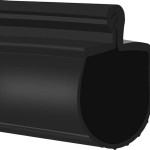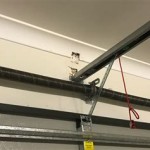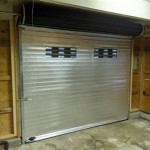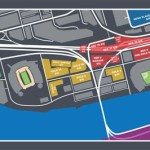Two-Post Lifts for the Home Garage: A Comprehensive Guide
The integration of a two-post lift into a home garage represents a significant upgrade for automotive enthusiasts and skilled DIY mechanics. These lifts provide an elevated platform for vehicle maintenance and repair, enhancing accessibility and safety compared to working on the ground or using ramps. This article explores the key features, considerations, and benefits associated with two-post lifts for residential garages.
Two-post lifts function by raising a vehicle via two vertical columns or posts, which are securely anchored to the garage floor. The vehicle is supported at four designated lifting points, typically located on the vehicle's frame or reinforced pinch welds. These lifts offer significant advantages in terms of access to the vehicle's underside, facilitating tasks such as oil changes, brake repairs, exhaust work, and suspension modifications. The increased working height also improves ergonomics and reduces physical strain.
Before installing a two-post lift, several factors must be carefully evaluated, including the garage’s structural integrity, ceiling height, floor thickness, and electrical capacity. Failure to properly assess these elements can lead to unsafe operating conditions or structural damage. Understanding the different types of two-post lifts available, their weight capacities, and their specific installation requirements is also critical for making an informed decision.
Types of Two-Post Lifts
Two primary categories of two-post lifts are commonly available for home garage applications: symmetric and asymmetric lifts. Each design offers distinct advantages depending on the types of vehicles serviced and the available workspace.
Symmetric Lifts: Symmetric lifts feature columns positioned directly across from each other, with the vehicle centered between the posts. This configuration distributes the vehicle's weight evenly, making it suitable for heavier vehicles and general maintenance tasks. The arms on a symmetric lift are typically of equal length, requiring the vehicle to be precisely positioned between the columns. Symmetric lifts are often favored for professional repair shops due to their versatility and ability to handle a wide range of vehicle sizes.
Asymmetric Lifts: Asymmetric lifts, conversely, have columns that are offset, allowing the vehicle to be positioned slightly back from the center of the lift. This design provides greater access to the vehicle's doors, making it easier for technicians to enter and exit the vehicle while it is raised. The arms on an asymmetric lift are typically of different lengths to accommodate the offset positioning. Asymmetric lifts are particularly useful for servicing vehicles with shorter wheelbases and for garages with limited space. However, it is crucial to ensure that the vehicle's weight is distributed properly to maintain stability when using an asymmetric lift.
Within these two categories, various sub-types exist, including clearfloor and baseplate lifts. Clearfloor lifts feature overhead equalization cables or hydraulic lines, eliminating any obstructions on the garage floor. This design provides unobstructed access to the vehicle's undercarriage and makes it easier to move tools and equipment around the lift. Baseplate lifts, on the other hand, have a low baseplate that connects the two columns, providing added stability. Baseplate lifts are often easier to install, as they require less precise concrete anchoring.
Essential Considerations for Home Garage Installation
The successful and safe integration of a two-post lift into a home garage requires careful planning and adherence to specific installation guidelines. Several critical factors must be considered to ensure the lift operates correctly and does not compromise the structural integrity of the garage.
Ceiling Height: Adequate ceiling height is paramount for operating a two-post lift safely. The minimum required ceiling height depends on the specific lift model and the height of the vehicles being serviced. It is crucial to measure the height of the tallest vehicle being lifted and add sufficient clearance for the lift's maximum lifting height, the vehicle's height, and any overhead obstructions, such as lighting fixtures or garage door tracks. Insufficient ceiling height can restrict the lift's functionality and create a safety hazard.
Floor Thickness and Concrete Quality: The garage floor must be strong enough to support the weight of the lift and the vehicle being lifted. A minimum concrete thickness of 4 inches is generally recommended, but thicker concrete may be required depending on the lift's weight capacity and the local building codes. The concrete must also be of sufficient compressive strength, typically at least 3000 PSI (pounds per square inch). It is advisable to consult with a structural engineer or concrete specialist to assess the floor's suitability and to determine if any reinforcement is necessary.
Electrical Requirements: Two-post lifts typically require a dedicated electrical circuit with sufficient amperage to power the hydraulic pump that raises and lowers the lift. The specific electrical requirements vary depending on the lift model, but a 220V circuit is common. It is essential to consult the lift's specifications and to ensure that the garage's electrical system can accommodate the additional load. A qualified electrician should be hired to install the necessary wiring and electrical connections.
Garage Space and Layout: The available space within the garage must be carefully considered to ensure that the lift can be installed and operated safely and efficiently. Sufficient clearance must be provided around the lift to allow for easy access to the vehicle and to maneuver tools and equipment. The location of existing garage features, such as doors, windows, and storage areas, should also be taken into account. It is advisable to create a detailed layout plan that shows the lift's location, the vehicle's path of travel, and the placement of tools and equipment.
Building Codes and Permits: Before installing a two-post lift, it is essential to check with the local building codes and regulations to determine if any permits are required. Some jurisdictions may have specific requirements for lift installations, such as inspection and certification. Failure to comply with these regulations can result in fines or legal issues.
Safety Features and Operational Practices
Safe operation of a two-post lift is paramount to prevent accidents and injuries. All two-post lifts incorporate various safety features designed to protect the operator and prevent the vehicle from falling. Understanding these features and adhering to proper operating procedures is crucial for maintaining a safe working environment.
Safety Locks: Two-post lifts are equipped with mechanical safety locks that engage at multiple height intervals. These locks prevent the lift from lowering unexpectedly in the event of a hydraulic failure. Before working under the vehicle, it is crucial to ensure that the safety locks are fully engaged. The locks should be audible and visible, confirming they are properly seated.
Overload Protection: Most two-post lifts have an overload protection system that prevents the lift from raising a vehicle that exceeds its rated weight capacity. This system typically involves a pressure relief valve that bypasses the hydraulic pump if the weight limit is exceeded. Attempting to lift a vehicle beyond the lift's capacity can damage the lift and create a dangerous situation.
Arm Restraints: Two-post lifts have arm restraints or locking mechanisms that prevent the lifting arms from unintentionally retracting or shifting while the vehicle is raised. These restraints ensure that the vehicle remains securely supported at all four lifting points. Before raising the vehicle, it is important to verify that the arm restraints are properly engaged and that the arms are positioned correctly under the vehicle's designated lifting points.
Proper Lifting Techniques: Correct lifting techniques are essential for safe operation. Before raising the vehicle, consult the vehicle's owner's manual or a reliable repair guide to identify the recommended lifting points. Ensure that the lifting pads are properly positioned and that the vehicle is balanced on the lift. Avoid lifting the vehicle on any part of the suspension, exhaust system, or other components that are not designed to support the vehicle's weight. Gradually raise the vehicle and recheck the lifting points to ensure that they remain stable and secure. Never work under a vehicle that is only supported by the hydraulic system; always engage the safety locks before beginning any work.
Regular Maintenance and Inspections: Regular maintenance and inspections are crucial for ensuring the lift's continued safe operation. The lift should be inspected regularly for any signs of damage, wear, or leaks. The hydraulic fluid level should be checked and replenished as needed. The lift's cables, chains, and pulleys should be lubricated and inspected for wear. The safety locks should be tested to ensure that they are functioning properly. Any damaged or worn parts should be replaced immediately. It is advisable to follow the manufacturer's recommended maintenance schedule and to keep a record of all maintenance and inspections.
In conclusion, a two-post lift can be a valuable addition to a home garage, providing enhanced accessibility and improved safety for vehicle maintenance and repair. However, it is essential to carefully consider the factors outlined in this article, including the garage’s structural integrity, ceiling height, floor thickness, and electrical capacity. Selecting the appropriate type of lift, adhering to proper installation guidelines, and implementing safe operating practices are crucial for ensuring the lift's safe and efficient operation. Regular maintenance and inspections are also essential for maintaining the lift's safety and reliability over time.

Max Jax Mk7 Symmetric Portable 2 Post Car Lift With 7 000 Lbs Weight Capacity And 110v Power Unit Included 5175548

Maxjax M7k Portable Car Lift

5 Signs You Need A Home Garage Car Lift

Low Ceiling Garage Lifts

Maxjax Lift Install Review Perfect For Low Ceiling Garages 8ft Ceilings

Bendpak Gp 7lcs 2 Post Lift 7 000 Lb Capacity 5175995

Portable Car Lifts Professional And Home Garage Bendpak

Maxjax Lift Installation Review Portable 2 Post For Home Garage

Home Garage With Racedeck Flooring And 2 Post Car Lift Orange County By Houzz

4 Post Car Lift Vs 2 7 Buying Considerations








